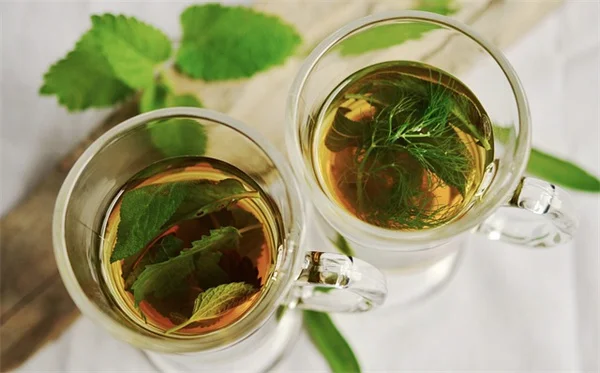Salt and Diabetes Risk: How Cutting Sodium Can Prevent Type 2 Diabetes
Can too much salt cause type 2 diabetes? The answer is yes - new research shows that high salt intake significantly increases your risk of developing type 2 diabetes. A groundbreaking Tulane University study found that people who always added salt to their food were 39% more likely to develop diabetes compared to those who rarely used salt. That's nearly double the risk!Here's why this matters for you: while we've known for years about sugar's connection to diabetes, this study reveals that your salt shaker might be just as dangerous. The researchers followed over 400,000 adults for nearly 12 years, proving this isn't just some small-scale observation - it's a major health concern affecting millions.I'll break it down simply: when you consume too much salt, it doesn't just raise your blood pressure. It can actually mess with your gut bacteria, cause inflammation, and lead to insulin resistance - the main culprit behind type 2 diabetes. And get this - salt might be tricking you into eating larger portions without even realizing it!The good news? You can take control starting today. In this article, I'll show you exactly how much salt is too much, where hidden sodium lurks in your diet, and most importantly - delicious alternatives that will keep your food flavorful while protecting your health.
E.g. :Jennifer Aniston's Pvolve Workout: The Gentle Fitness Program Backed by Science
Advertisement
- 1、Shaking Up the Salt Habit: How Your Salt Shaker Might Be Hurting You
- 2、How Much Salt Is Too Much?
- 3、Smart Salt Swaps That Actually Taste Good
- 4、Your Action Plan for Cutting Salt Without Cutting Flavor
- 5、The Final Word on Salt and Your Health
- 6、The Hidden Salt in Your Favorite Childhood Foods
- 7、The Science Behind Salt Cravings
- 8、Cultural Differences in Salt Consumption
- 9、The Future of Salt Reduction Technology
- 10、Salt and Your Skin: The Beauty Connection
- 11、FAQs
Shaking Up the Salt Habit: How Your Salt Shaker Might Be Hurting You
The Surprising Link Between Salt and Diabetes
You've probably heard that too much sugar can lead to type 2 diabetes, but did you know your salt habit might be just as dangerous? A groundbreaking study from Tulane University reveals that high salt consumption could increase your risk of developing type 2 diabetes by up to 39%!
Let me break this down for you. Researchers followed over 400,000 adults for nearly 12 years and found something shocking. People who always added salt to their food were 39% more likely to develop diabetes compared to those who rarely used salt. That's nearly double the risk! And it's not just about blood pressure anymore - we're talking about your body's ability to process sugar.
Why Salt Might Be Your Metabolism's Worst Enemy
Here's where it gets really interesting. Nutrition expert Kelsey Costa explains that salt doesn't just make you thirsty - it can actually mess with your gut bacteria and cause inflammation. And guess what inflammation leads to? You got it - insulin resistance, the main culprit behind type 2 diabetes.
But wait, there's more! Salt might be tricking you into eating more than you need. When researchers looked deeper, they found that people who added salt tended to eat larger portions. It's like a double whammy - the salt itself causes problems, and it makes you eat more food that could cause problems too. Talk about a sneaky saboteur!
 Photos provided by pixabay
Photos provided by pixabay
The Salt-Obesity-Diabetes Triangle
Now let's connect some dots. We know salt can lead to weight gain, and we know obesity increases diabetes risk. But how exactly does this happen? Here's a simple table to show you the dangerous cycle:
| Step | What Happens | Result |
|---|---|---|
| 1 | You eat salty foods | Your body retains more water |
| 2 | Salt disrupts gut bacteria | Inflammation increases |
| 3 | Inflammation affects metabolism | Your cells become insulin resistant |
| 4 | You crave more high-energy foods | Weight gain occurs |
| 5 | Extra weight strains your system | Diabetes risk skyrockets |
See how that works? It's like dominoes falling - one bad habit leads to another, and before you know it, you're facing serious health issues. But don't panic! The good news is that this chain reaction can be stopped at any point.
How Much Salt Is Too Much?
The Shocking Truth About American Salt Habits
Here's a wake-up call: the average American consumes about 3,400 mg of sodium daily - that's nearly 50% more than the recommended limit! The USDA says we should stay under 2,300 mg, while the American Heart Association suggests an even lower 1,500 mg for optimal health.
But here's the kicker - most of this salt isn't coming from your salt shaker. About 70% of our sodium intake comes from processed and restaurant foods. That means even if you never touch the salt shaker, you could still be getting way too much. Sneaky, right?
Spotting Hidden Salt in Your Diet
Want to know where salt hides? Here are some common culprits:
- Bread and rolls (yes, even the "healthy" ones)
- Cold cuts and cured meats
- Pizza (the #1 source of sodium in American diets)
- Soup (canned varieties are especially bad)
- Cheese (sorry, cheese lovers)
The bottom line? You're probably eating more salt than you think. But don't worry - we've got some great solutions coming up that will let you enjoy flavorful food without the sodium overload.
Smart Salt Swaps That Actually Taste Good
 Photos provided by pixabay
Photos provided by pixabay
The Salt-Obesity-Diabetes Triangle
Now, I know what you're thinking: "If I cut back on salt, my food will taste like cardboard!" Not true! There are plenty of delicious alternatives that can make your meals sing without the sodium overload. Here are my top picks:
1. Citrus Power: A squeeze of lemon or lime can brighten up any dish. Try it on fish, chicken, or even roasted vegetables. The acidity tricks your taste buds into perceiving more flavor.
2. Garlic and Onion: These kitchen staples add depth and complexity to dishes. Pro tip: roast them first to bring out their natural sweetness!
3. Herb Heaven: Fresh herbs like basil, cilantro, and rosemary pack a flavor punch. And here's a fun fact - using fresh herbs means you're getting extra nutrients too!
The Spice Is Right
Let's talk about spices - nature's flavor bombs that don't come with a sodium penalty. Some great options include:
- Smoked paprika (for that "bacon-like" umami flavor)
- Cumin (perfect for Mexican and Middle Eastern dishes)
- Turmeric (adds color and anti-inflammatory benefits)
- Black pepper (the original flavor enhancer)
And here's a game-changer: nutritional yeast. It has a cheesy, nutty flavor that's perfect for sprinkling on popcorn or pasta. Plus, it's packed with B vitamins!
Your Action Plan for Cutting Salt Without Cutting Flavor
Small Changes, Big Results
You don't have to go cold turkey on salt to see benefits. Try these simple strategies:
1. The 50% Rule: When cooking, use half the salt a recipe calls for. You probably won't notice the difference, but your body will thank you.
2. Salt Last: Add salt at the end of cooking rather than during. This way, the salt stays on the surface of the food where your tongue can taste it better.
3. Read Labels: Check nutrition facts for sodium content. Look for products with less than 140mg per serving.
 Photos provided by pixabay
Photos provided by pixabay
The Salt-Obesity-Diabetes Triangle
Eating at restaurants can be a sodium minefield, but you can navigate it safely:
Ask for sauces and dressings on the side - you'll use less than the kitchen would pour on. Choose grilled over fried options (they're usually lower in salt). And don't be shy about asking the chef to go easy on the salt - most restaurants are happy to accommodate.
Remember, reducing your salt intake isn't about deprivation - it's about making smarter choices that still let you enjoy delicious food. Your taste buds will adjust in about 2-3 weeks, and soon, you'll find overly salty foods actually taste unpleasant!
The Final Word on Salt and Your Health
Balance Is Key
Here's the thing - we do need some sodium for our bodies to function properly. It helps with nerve transmission and muscle function. But like most things in life, it's all about balance.
The Tulane University study isn't saying you should eliminate salt completely. Instead, it's about being mindful of how much you're consuming and making smart swaps where you can. Think of it like your budget - you wouldn't spend your entire paycheck on one thing, right? Same goes for your sodium "budget."
Your Next Steps
Ready to take control of your salt intake? Start with these three easy steps:
- Put your salt shaker in a hard-to-reach place (out of sight, out of mind!)
- Try one new salt-free seasoning each week
- Choose one processed food to swap for a fresh alternative
Small changes add up to big health benefits over time. And the best part? You might discover new flavors you love even more than salt!
So what are you waiting for? Your future, healthier self will thank you for making these changes today. After all, isn't preventing diabetes worth giving your salt shaker a little vacation?
The Hidden Salt in Your Favorite Childhood Foods
Nostalgic Snacks That Pack a Sodium Punch
Remember those lunchbox favorites from your school days? Turns out many of them were secretly loading you up with salt. A single serving of chicken noodle soup from a can contains about 890mg of sodium - that's nearly half your daily limit in one bowl! And those beloved peanut butter and jelly sandwiches? The bread alone can add 200-300mg per slice.
Here's something that might surprise you - even sweet treats like chocolate pudding and breakfast cereals often contain added salt. Food manufacturers use salt to enhance flavors and preserve products, meaning it sneaks into places you'd never expect. That bowl of cornflakes you loved as a kid? About 200mg of sodium before you even pour the milk!
How School Cafeterias Are Changing Their Ways
Many school districts have started reducing sodium in cafeteria meals, but progress has been slow. The USDA's school lunch standards now require gradual sodium reductions through 2024. Some innovative schools are getting creative by:
- Swapping out processed meats for fresh roasted chicken
- Using herbs and spices instead of salt in vegetable dishes
- Offering low-sodium versions of popular condiments
But here's the challenge - kids often resist these healthier options because their taste buds have become accustomed to saltier foods. That's why some schools are implementing taste-test programs to help students gradually adjust to lower-sodium meals.
The Science Behind Salt Cravings
Why Your Brain Loves That Salty Taste
Ever wonder why salty chips are so hard to resist? It's not just willpower - there's actual neuroscience at play. Salt triggers dopamine release in your brain's reward center, creating a pleasurable sensation that makes you want more. This mechanism evolved to help our ancestors seek out essential minerals, but in today's world of abundant processed foods, it's working against us.
Research shows that regular exposure to high-salt foods can actually change your taste bud sensitivity. The more salt you eat, the more you need to taste the same level of saltiness. But here's the good news - this process works in reverse too! When you reduce salt intake, your taste buds reset within a few weeks.
The Stress-Salt Connection You Never Knew About
Did you know that stress can increase your salt cravings? When you're stressed, your body produces more cortisol, which can disrupt fluid balance and make you crave salty foods. This creates a vicious cycle - stress leads to salt cravings, excess salt causes inflammation, and inflammation creates more stress on your body.
Breaking this cycle starts with awareness. Next time you're stressed and reach for salty snacks, try these alternatives:
| Craving | Healthier Alternative | Sodium Savings |
|---|---|---|
| Potato chips | Air-popped popcorn with nutritional yeast | 150mg per serving |
| Pretzels | Roasted chickpeas with smoked paprika | 200mg per serving |
| Cheese crackers | Whole grain crackers with avocado | 180mg per serving |
See how easy it is to satisfy that crunchy, salty craving without the sodium overload? Your body will thank you later!
Cultural Differences in Salt Consumption
How Other Countries Approach Salt Differently
While Americans average about 3,400mg of sodium daily, other cultures consume far less. In Finland, a national salt reduction program cut average intake from 5,000mg to under 3,000mg over 30 years - and saw a 75% decrease in stroke deaths! The UK reduced population sodium intake by 15% through voluntary industry targets.
Japan presents an interesting case - despite high salt consumption from soy sauce and miso, they have lower heart disease rates. Researchers believe this "Japanese paradox" may be due to protective factors in their diet like fish, seaweed, and green tea. But even Japan is now working to reduce salt intake as hypertension remains a major health concern.
Traditional Low-Sodium Cuisines Worth Exploring
Looking for naturally low-salt culinary inspiration? Mediterranean and Southeast Asian cuisines offer delicious alternatives:
Greek cuisine relies on lemon juice, olive oil, and herbs like oregano to create vibrant flavors without excess salt. A simple Greek salad with feta, olives, and vegetables gets its kick from fresh lemon and herbs rather than added salt.
Thai food balances sweet, sour, spicy, and umami flavors using ingredients like lime juice, chili peppers, and fish sauce (used sparingly). The complex flavor profile means you don't miss the salt. Try making pad Thai at home with reduced-sodium fish sauce - you'll be amazed at how flavorful it can be!
The Future of Salt Reduction Technology
Innovative Solutions From Food Scientists
Food companies are developing clever ways to reduce sodium without sacrificing taste. Some exciting innovations include:
Microscopic salt crystals that dissolve faster on the tongue, creating a stronger salty perception with less actual salt. One company's product uses pyramid-shaped crystals that provide the same salty taste with 50% less sodium.
Umami-boosting ingredients like mushrooms, tomatoes, and fermented foods can enhance savory flavors, reducing the need for salt. Have you tried adding sautéed mushrooms to your burger? They add such rich flavor you won't miss the extra salt!
Smart Kitchen Gadgets That Help You Cut Back
Technology is coming to the rescue of salt-conscious cooks. Some cool new tools include:
- Smart salt shakers that measure and track your usage
- Bluetooth-enabled food scales that calculate sodium content
- Recipe apps that automatically suggest salt reductions
My personal favorite? A "flavor booster" blender that purees herbs, garlic, and citrus into instant seasoning pastes. It's like having a gourmet chef in your kitchen helping you create low-sodium masterpieces!
Salt and Your Skin: The Beauty Connection
How Excess Sodium Affects Your Appearance
Here's something they don't tell you in health class - too much salt can make you look puffy and tired. Sodium causes water retention, leading to under-eye bags and facial puffiness. Celebrity estheticians report that clients who reduce salt intake often see noticeable improvements in skin tone and reduction in puffiness within just a few days.
High-salt diets may also exacerbate skin conditions like acne and rosacea. The inflammation caused by excess sodium can trigger flare-ups and slow healing. Dermatologists recommend that patients with chronic skin issues try a low-sodium diet for 4-6 weeks to see if it makes a difference.
Salt-Based Beauty Treatments That Actually Work
Ironically, while dietary salt can cause problems, topical salt treatments offer beauty benefits. Dead Sea salt scrubs help exfoliate and detoxify skin. Epsom salt baths can reduce muscle soreness and improve circulation. The key difference? These treatments use specific types of salts in controlled amounts rather than the refined sodium overload in our diets.
For a simple at-home treatment, try this: mix 1 cup fine sea salt with 1/2 cup coconut oil and 10 drops of your favorite essential oil. Use it as a weekly body scrub to soften skin and improve circulation. Just don't eat it - that would defeat the purpose!
E.g. :Adding Salt to Meals as a Risk Factor of Type 2 Diabetes Mellitus: A ...
FAQs
Q: How does salt actually increase diabetes risk?
A: Salt affects diabetes risk in several surprising ways that go beyond just raising blood pressure. First, excess sodium disrupts your gut microbiome balance, leading to inflammation that contributes to insulin resistance. Second, high salt intake is linked to increased calorie consumption - people who add salt tend to eat larger portions. Third, salt may trigger metabolic changes that affect how your body processes sugar. The Tulane study found that even after accounting for other dietary factors, the salt-diabetes connection remained strong, with "always" salt users having 39% higher risk than those who rarely added salt.
Q: What's the recommended daily salt limit to prevent diabetes?
A: The USDA recommends staying under 2,300 mg of sodium daily, while the American Heart Association suggests an even lower 1,500 mg for optimal health. Here's the shocking truth: most Americans consume about 3,400 mg daily - that's nearly 50% over the limit! To put this in perspective, just one teaspoon of table salt contains about 2,300 mg of sodium. Remember, about 70% of our sodium comes from processed foods, not the salt shaker. I recommend starting by checking nutrition labels and aiming to reduce your intake gradually - your taste buds will adjust in about 2-3 weeks.
Q: Are some types of salt healthier for diabetes prevention?
A: While pink Himalayan or sea salts are often marketed as healthier options, all salts contain similar sodium content by weight. The minerals in these specialty salts exist in such tiny amounts that you'd need to consume dangerous quantities to get any benefit. The key difference is crystal size - larger crystals mean less sodium fits in a teaspoon. My advice? Focus on reducing all salt types and explore flavorful alternatives like herbs, spices, citrus, and garlic that add taste without sodium. Remember - when it comes to diabetes prevention, all forms of excess salt can be problematic.
Q: What are the best salt alternatives for people at risk of diabetes?
A: As a nutrition expert, I recommend these five fantastic flavor boosters that won't spike your diabetes risk: 1) Fresh herbs (basil, cilantro, rosemary) - packed with flavor and nutrients, 2) Citrus juices (lemon/lime) - their acidity enhances other flavors, 3) Garlic and onions - add depth without sodium, 4) Nutritional yeast - gives a cheesy, umami taste with B vitamins, and 5) Salt-free spice blends (check labels!). Pro tip: Try smoked paprika for a bacon-like flavor or cumin for Mexican dishes. These swaps not only reduce sodium but often add extra health benefits!
Q: How quickly can reducing salt help lower diabetes risk?
A: The good news is that positive changes can start happening relatively quickly. While long-term salt reduction provides the most protection, research shows that even short-term decreases can improve insulin sensitivity. Most people notice taste bud adjustments in 2-3 weeks, making lower-salt foods more enjoyable. Within months, reduced sodium intake can help lower blood pressure and inflammation - two key diabetes risk factors. For maximum benefit, pair salt reduction with other healthy habits like regular exercise and balanced eating. Remember - every gram of sodium you cut today is an investment in your future health!







